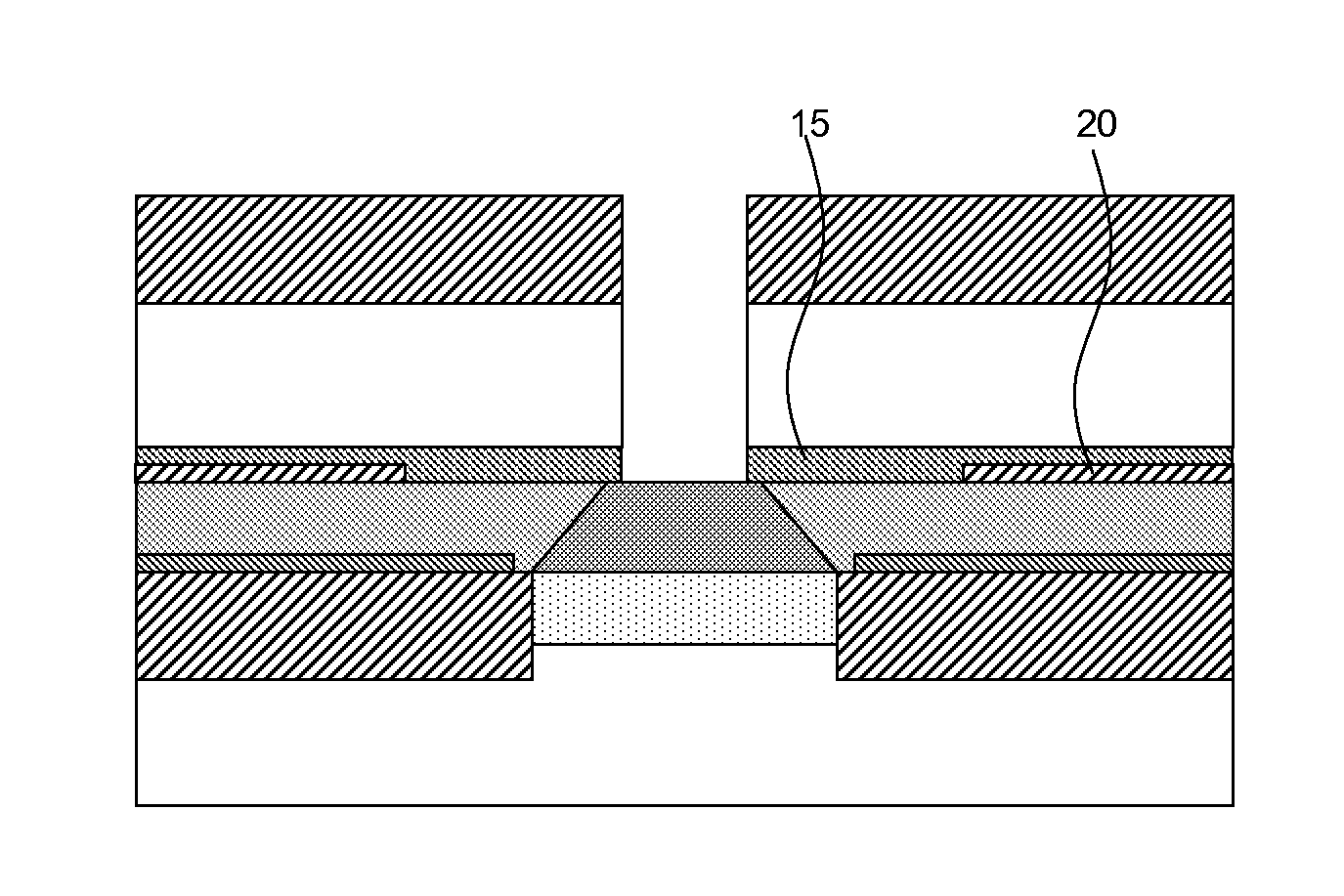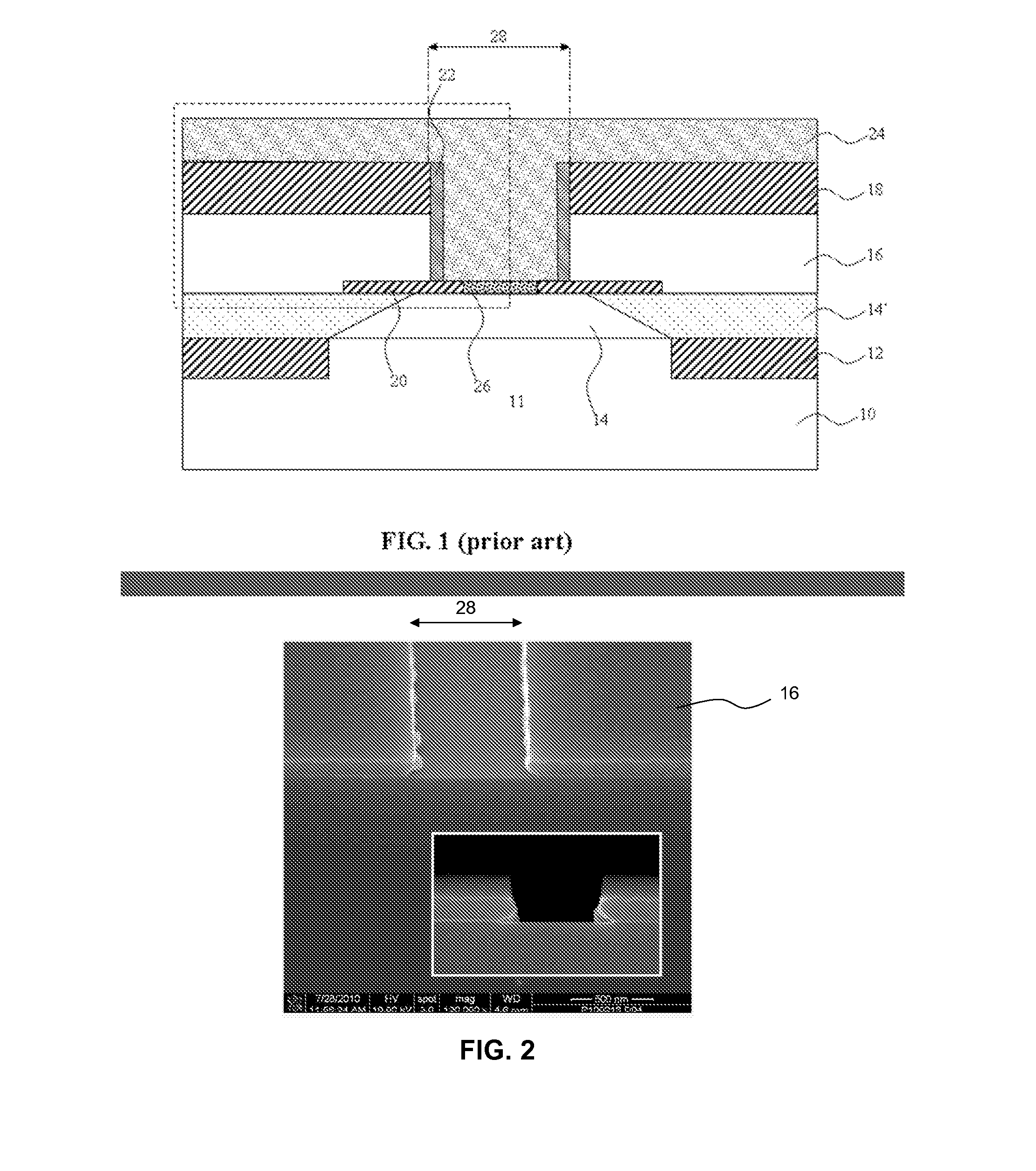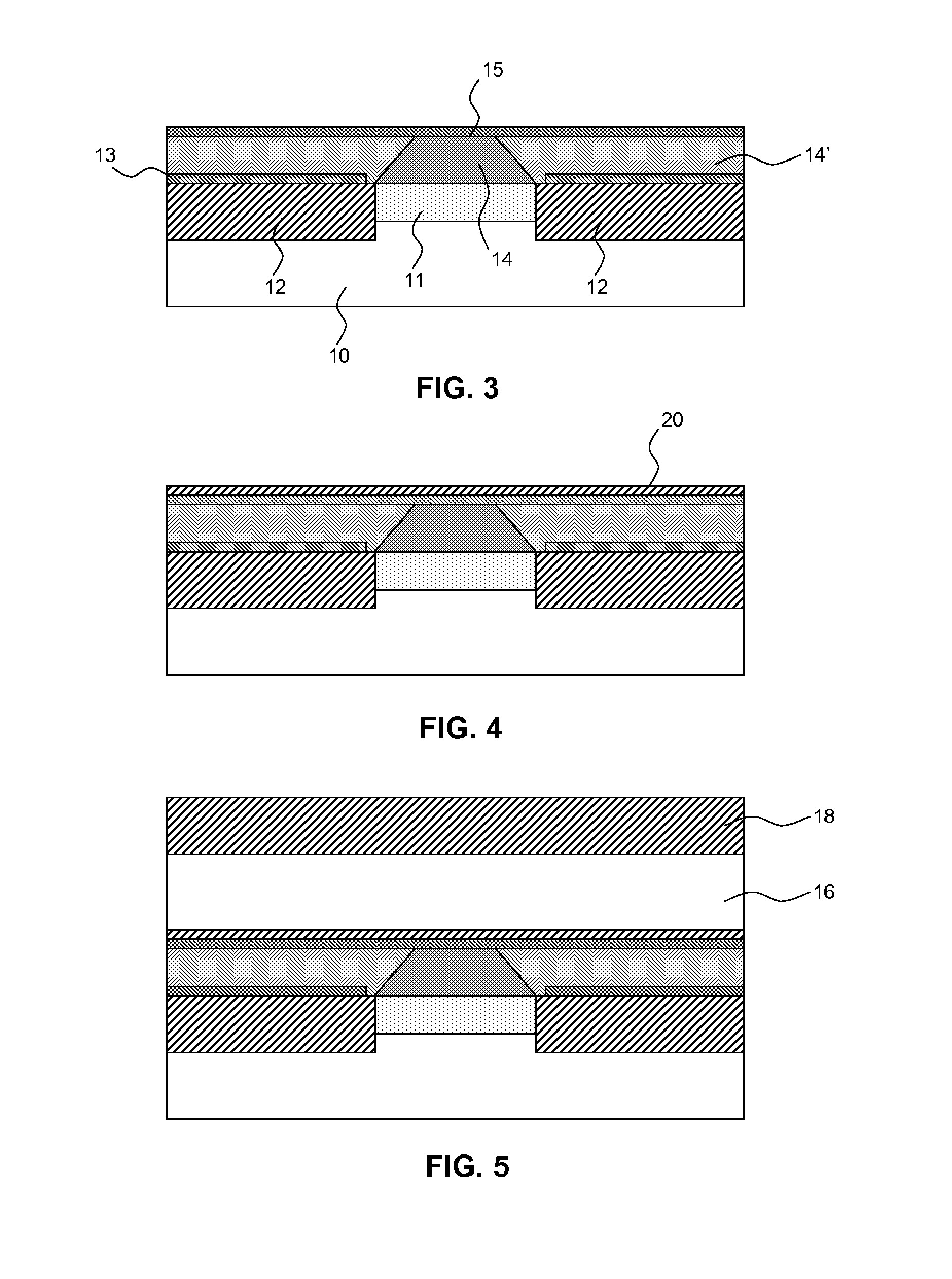Method of manufacturing IC comprising a bipolar transistor and IC
a technology of bipolar transistors and manufacturing methods, applied in the direction of transistors, electrical apparatus, semiconductor devices, etc., can solve the problems of limiting the usefulness of cmos transistors in rf applications, prohibiting the use of rf-cmos technologies for manufacturing small volume devices, and increasing the cost of manufacturing integrated circuits based on silicon bipolar transistor technology. , to achieve the effect of reducing base-link resistance and improving cut-off frequency and/or manufactur
- Summary
- Abstract
- Description
- Claims
- Application Information
AI Technical Summary
Benefits of technology
Problems solved by technology
Method used
Image
Examples
Embodiment Construction
[0022]Embodiments of the invention are described in more detail and by way of non-limiting examples with reference to the accompanying drawings, wherein:
[0023]FIG. 1 schematically depicts a prior art bipolar transistor;
[0024]FIG. 2 show a scanning electron microscopic image of a prior art bipolar transistor;
[0025]FIG. 3-8 schematically depict various steps of an IC manufacturing method according to an embodiment of the present invention; and
[0026]FIG. 9 schematically depicts an aspect of an IC manufacturing method according to an alternative embodiment of the present invention.
DETAILED DESCRIPTION OF THE DRAWINGS
[0027]It should be understood that the Figures are merely schematic and are not drawn to scale. It should also be understood that the same reference numerals are used throughout the Figures to indicate the same or similar parts.
[0028]A possible starting point of the method of the present invention is shown in FIG. 3. A substrate 10 including an active region 11 in between is...
PUM
 Login to View More
Login to View More Abstract
Description
Claims
Application Information
 Login to View More
Login to View More - R&D
- Intellectual Property
- Life Sciences
- Materials
- Tech Scout
- Unparalleled Data Quality
- Higher Quality Content
- 60% Fewer Hallucinations
Browse by: Latest US Patents, China's latest patents, Technical Efficacy Thesaurus, Application Domain, Technology Topic, Popular Technical Reports.
© 2025 PatSnap. All rights reserved.Legal|Privacy policy|Modern Slavery Act Transparency Statement|Sitemap|About US| Contact US: help@patsnap.com



